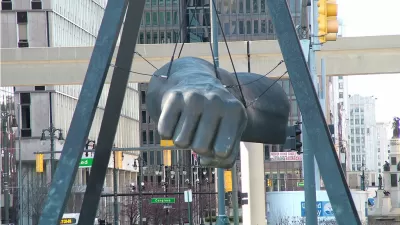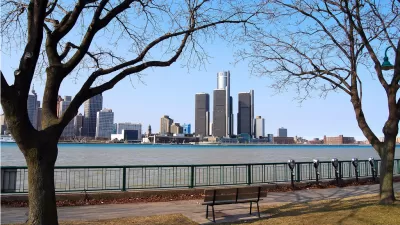Federal judge Steven Rhodes approved Detroit’s plan to shed $7 billion of the total $18 billion debt.
Sixteen months after the Motor City declared bankruptcy, a federal judge approved of Detroit’s plan to move forward in repaying its debt, reports Michael Fletcher of The Washington Post.
For one, Detroit will set aside "$1.7 billion in new investments over the next nine years — a vast sum for a city that for decades has been trimming investments and in recent years had capital expenditures of just $10 million... The money will go to new computer systems, fire trucks, ambulances and other infrastructure aimed at reviving city services that in many cases had failed to function in recent years."
In addition, according to Monica Davey and Mary Williams Walsh of The New York Times, "Retired general municipal workers agreed to 4.5 percent cuts to their monthly pension checks, an end to cost-of-living increases, higher health care costs and a mandatory forfeiture of previous payments from the pension system that were deemed improper. Retired police officers and fire fighters have accepted smaller reductions."
Detroit’s retirees were a major stakeholder in the negotiations process, and they received a better deal than first proposed due to the "grand bargain," where "foundations, the state and the Detroit Institute of Arts pledged millions of dollars to bolster the city pension system and give the art collection new, bankruptcy-proof ownership."
Despite this new ruling, Detroit’s future is still hazy as the bankruptcy plans leave little financial wiggle room for the future. However, the deal does limit the amount of appellate litigation the Motor City could face in the future, as these are costly legal wars are being waged by many other bankrupt jurisdictions as they exit bankruptcy.
FULL STORY: Federal judge approves Detroit’s blueprint to exit bankruptcy

Alabama: Trump Terminates Settlements for Black Communities Harmed By Raw Sewage
Trump deemed the landmark civil rights agreement “illegal DEI and environmental justice policy.”

Planetizen Federal Action Tracker
A weekly monitor of how Trump’s orders and actions are impacting planners and planning in America.

Why Should We Subsidize Public Transportation?
Many public transit agencies face financial stress due to rising costs, declining fare revenue, and declining subsidies. Transit advocates must provide a strong business case for increasing public transit funding.

Understanding Road Diets
An explainer from Momentum highlights the advantages of reducing vehicle lanes in favor of more bike, transit, and pedestrian infrastructure.

New California Law Regulates Warehouse Pollution
A new law tightens building and emissions regulations for large distribution warehouses to mitigate air pollution and traffic in surrounding communities.

Phoenix Announces Opening Date for Light Rail Extension
The South Central extension will connect South Phoenix to downtown and other major hubs starting on June 7.
Urban Design for Planners 1: Software Tools
This six-course series explores essential urban design concepts using open source software and equips planners with the tools they need to participate fully in the urban design process.
Planning for Universal Design
Learn the tools for implementing Universal Design in planning regulations.
Caltrans
Smith Gee Studio
Institute for Housing and Urban Development Studies (IHS)
City of Grandview
Harvard GSD Executive Education
Toledo-Lucas County Plan Commissions
Salt Lake City
NYU Wagner Graduate School of Public Service





























